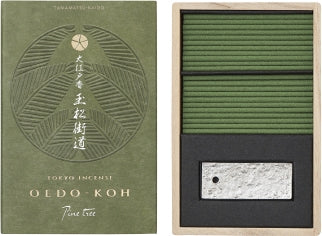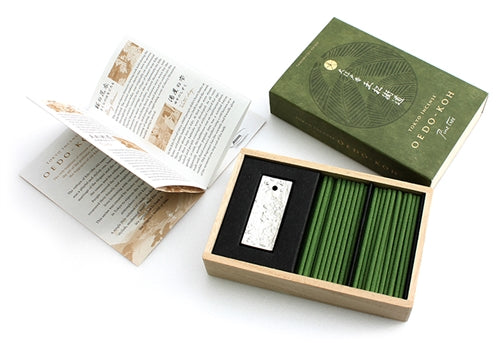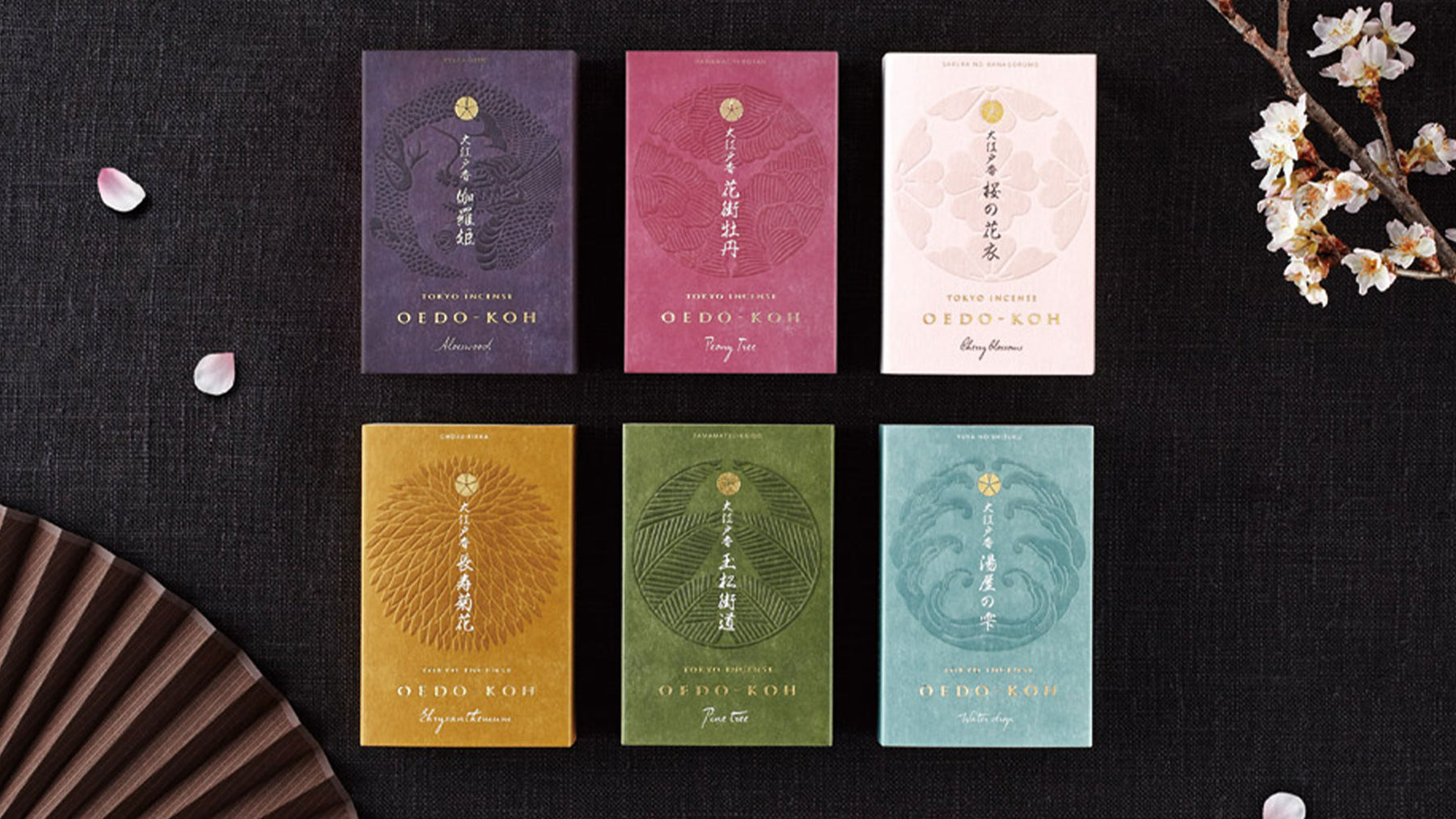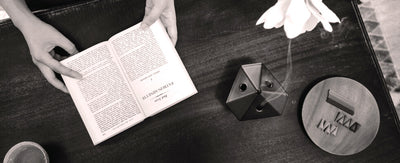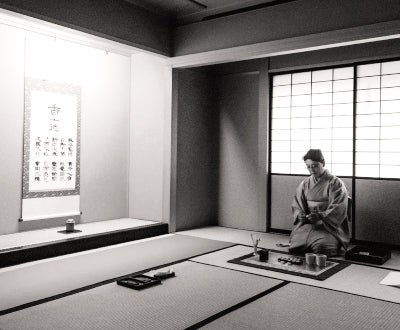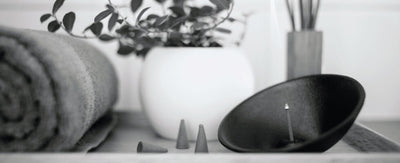OEDO-KOH - Pine Tree 60 sticks
The brisk and refreshing aroma evokes reveries of old Edo, where pines lined the streets frequented by travelers, keeping watch and protecting them.
It is traditionally believed that the kami (deities) dwell in evergreen trees. The word matsu means both "pine" and "wait" (for the deity to descend), and the
pine is part of the felicitous trio of pine, bamboo, and plum tree, and the auspicious pairing of crane and pine. Pine decorations are displayed at New Year's and a monumental pine tree is painted on the backdrop of the Noh stage - all expressing the pine's association with luck and longevity. In ukiyo-e woodcuts, boldy rendered pines standing in the midst of Edo-era people bustling to and fro are a classic motif.
-------------------------------------------------------------------------------
- A perfumery, powdery fragrance
- No bamboo core for a clean burning, pure scent.
- Box includes 60 sticks and a tin incense stand
- Petite, cute package for great gift for every occasion.
- For refreshment, relaxation, reading, listening to music, yoga, bathing
-------------------------------------------------------------------------------
 |
Key Note: | Pine Tree (perfumery & powdery) |
 |
Burn Time: | Approx. 12 min. |
 |
W x H x D (inch): | 2 5/8 x 4 x 13/16 |
 |
W x H x D (mm): | 67 x 102 x 20 |












